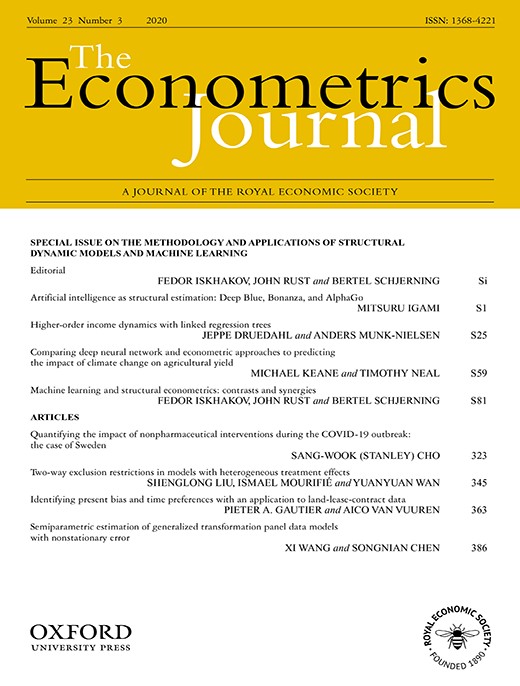-
Views
-
Cite
Cite
Michael Keane, Timothy Neal, Comparing deep neural network and econometric approaches to predicting the impact of climate change on agricultural yield, The Econometrics Journal, Volume 23, Issue 3, September 2020, Pages S59–S80, https://doi.org/10.1093/ectj/utaa012
Close - Share Icon Share
Summary
Predicting the impact of climate change on crop yield is difficult, in part because the production function mapping weather to yield is high dimensional and nonlinear. We compare three approaches to predicting yields: (a) deep neural networks (DNNs), (b) traditional panel-data models, and (c) a new panel-data model that allows for unit and time fixed effects in both intercepts and slopes in the agricultural production function—made feasible by a new estimator called Mean Observation OLS (MO-OLS). Using U.S. county-level corn-yield data from 1950 to 2015, we show that both DNNs and MO-OLS models outperform traditional panel-data models for predicting yield, both in-sample and in a Monte Carlo cross-validation exercise. However, the MO-OLS model substantially outperforms both DNNs and traditional panel-data models in forecasting yield in a 2006–2015 holdout sample. We compare the predictions of all these models for climate change impacts on yields from 2016 to 2100.





